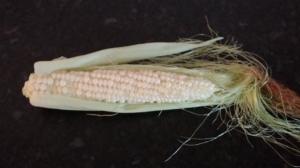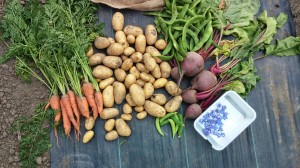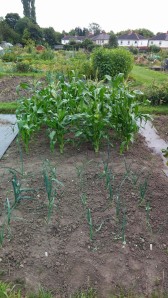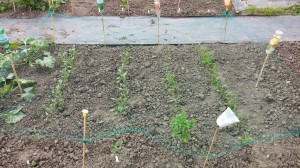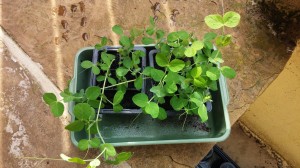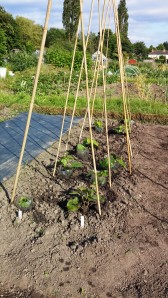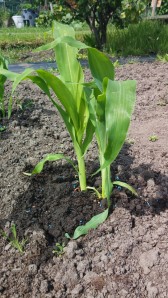I absolutely love sweet corn so can’t wait to harvest them. I was a bit too eager the other day and picked a cob to have a look. They re not quite there yet, the cob needs to be a lot fatter and a darker yellow.
Here’s when you know it’s ready…
Corn is ready to be picked as soon as the ears have completely filled out. This goes for sweet corn and roasting ears.You can tell when this happens by feeling the end of an ear. If it’s rounded or blunt rather than pointed, the ears are ready. The silks also dry up when the ears are almost ready to be picked.
If you don’t trust your judgment, you can pull back a bit of the husk and check to see if the ear looks well filled and the kernels are creamy yellow or white. Many gardening guides tell you to pierce a kernel with your thumb nail to test for ripeness. If the liquid inside is watery, that ear isn’t quite ready. If the liquid is white or “milky,” you’re in business (http://www.garden.org/foodguide/browse/veggie/corn_harvesting/794)

